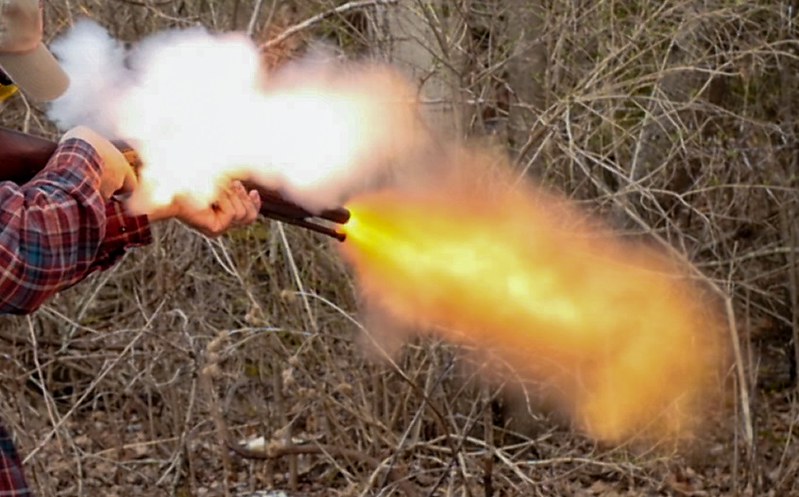wcubed
36 Cl.
This is the flintlock that got me into BP shooting.
I picked it up about a year and a half ago, and finally decided to shoot it, after looking it over.
It has led a rough life. I've been trying to figure out exactly what it started out as, which is very difficult because it has practically no markings on it. At this point, it appears to be a parts gun.
The lock reminds me of 3rd pattern Brown Bess, but with barely any markings, the best guess is that it is an American copy. The barrel is .75 caliber, and was cut down to only 15 3/8 inches a very long time ago. I have no idea what the buttplate, or trigger and guard came from.
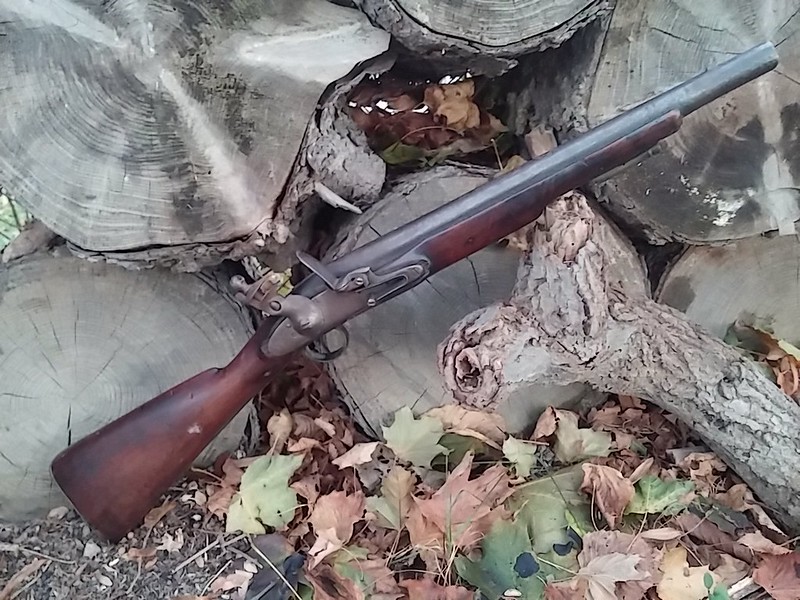
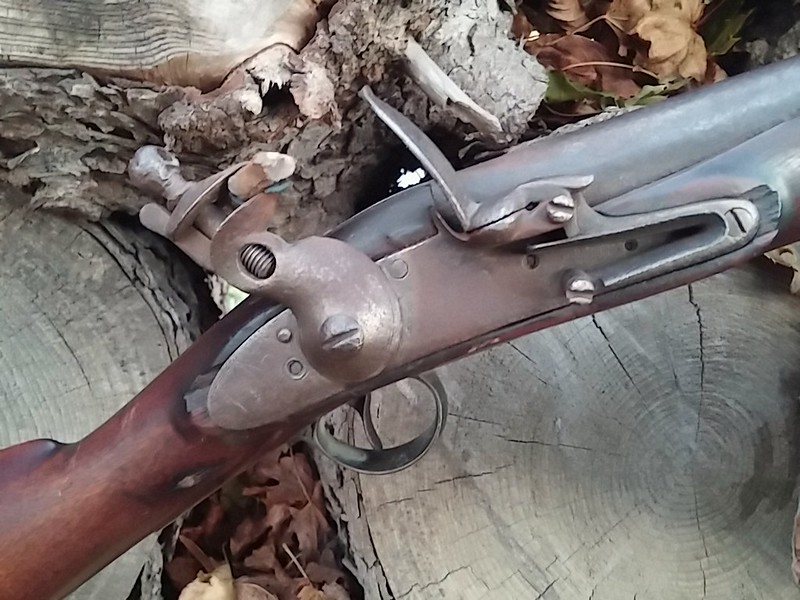
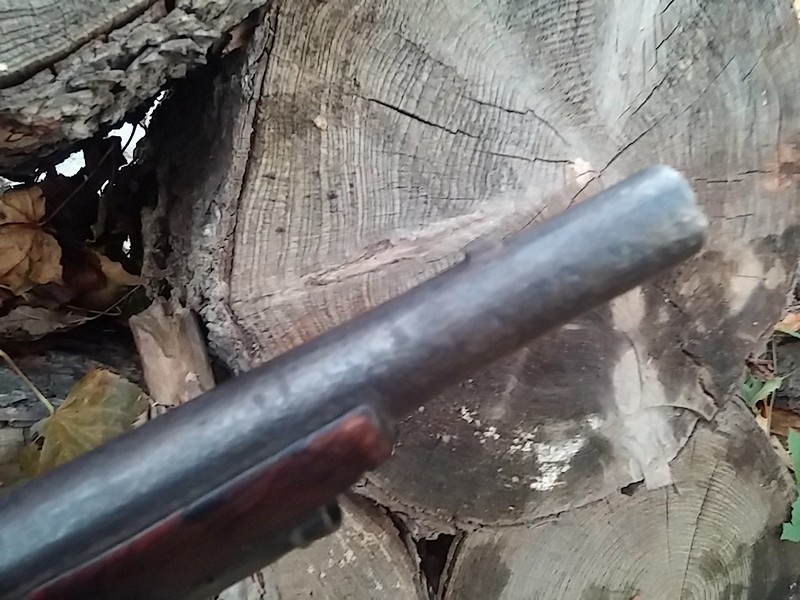
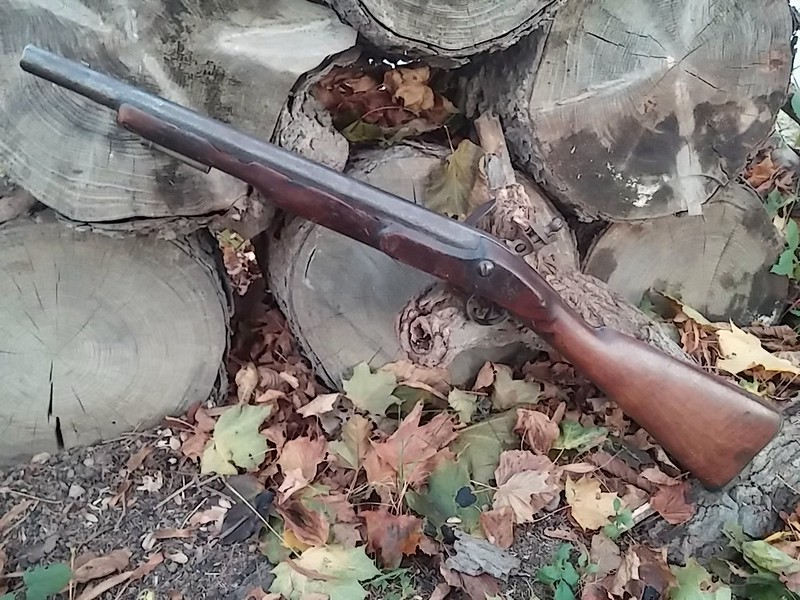
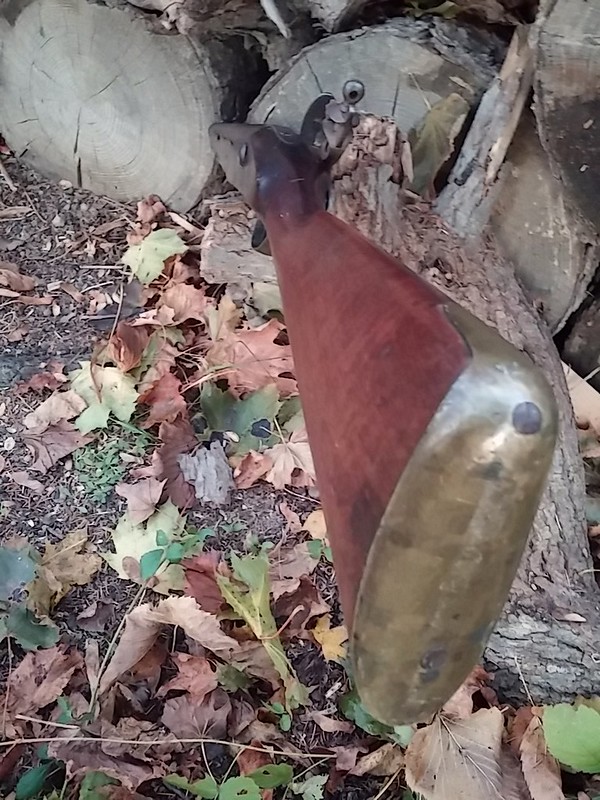
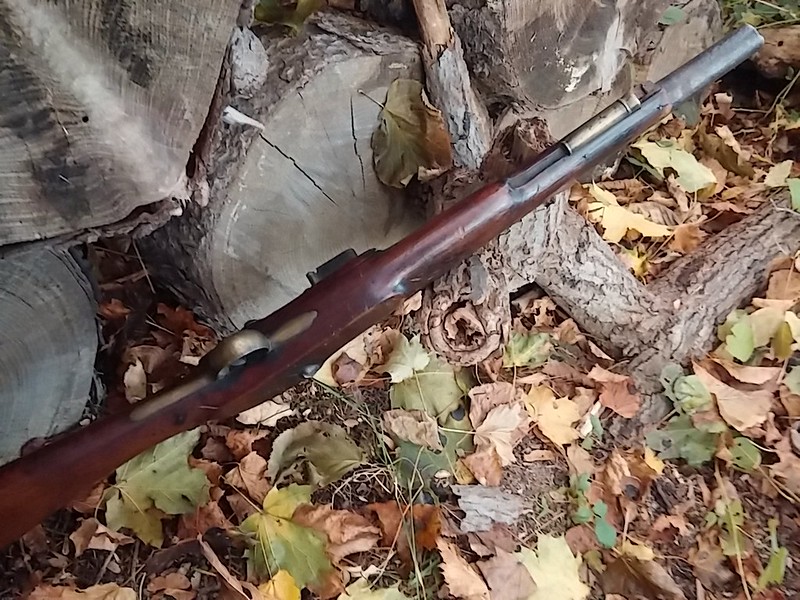
The end of the barrel looks like it was used for a battering ram.
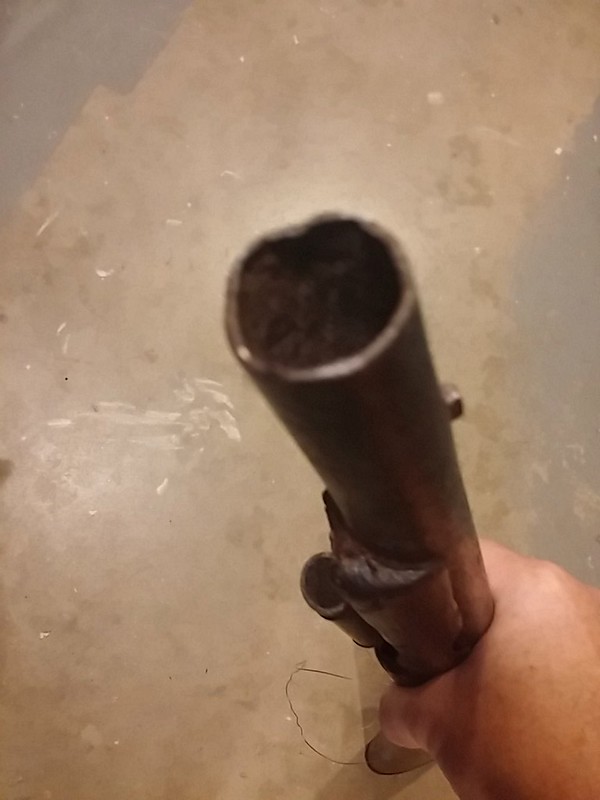
A closer look at the brass.
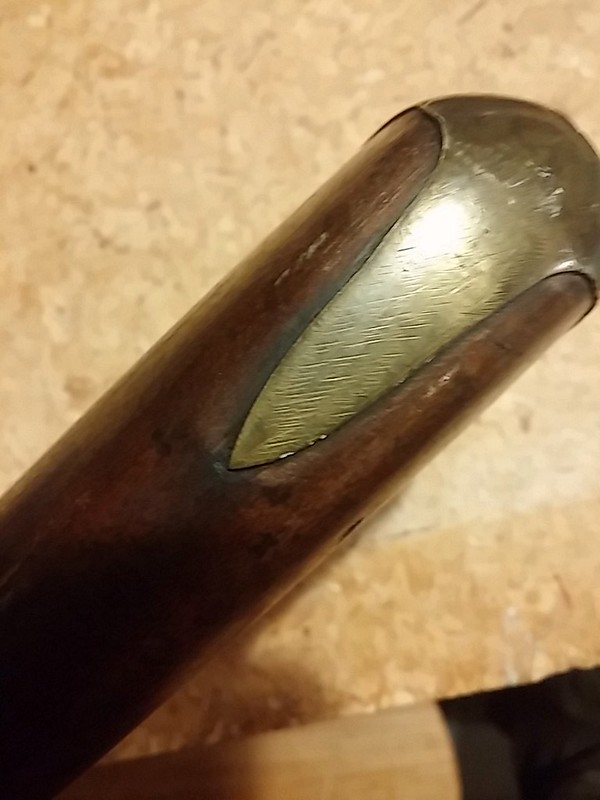
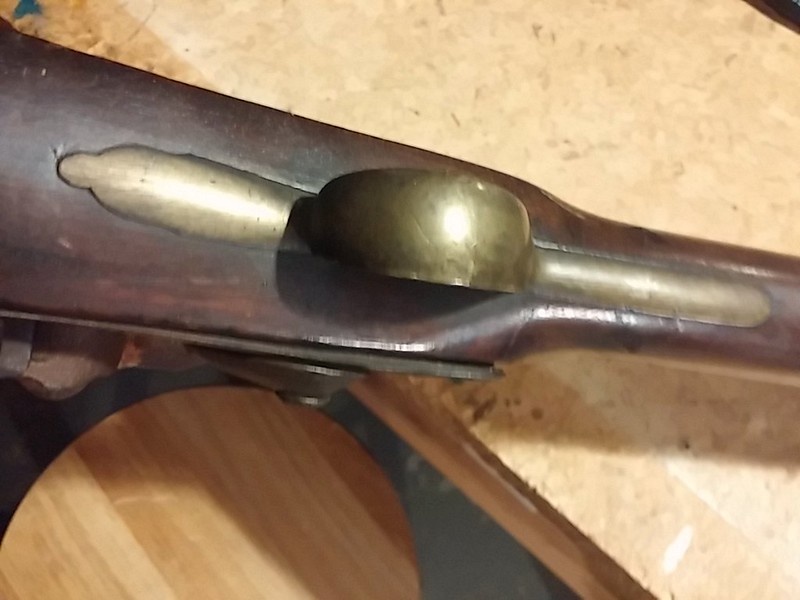
This pointy end of the lock was ground off to fit in the current stock. There isn't much detail to the lock.
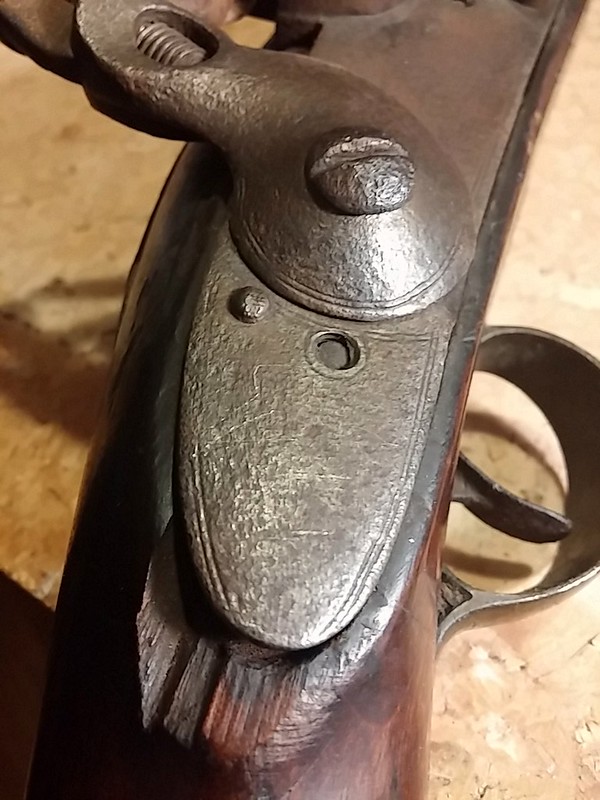
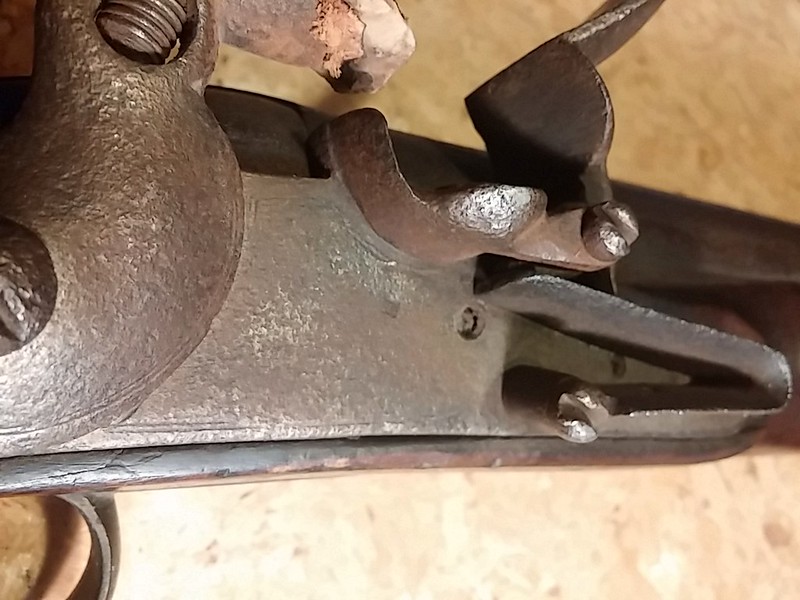
I did manage to get the lock out of the stock.
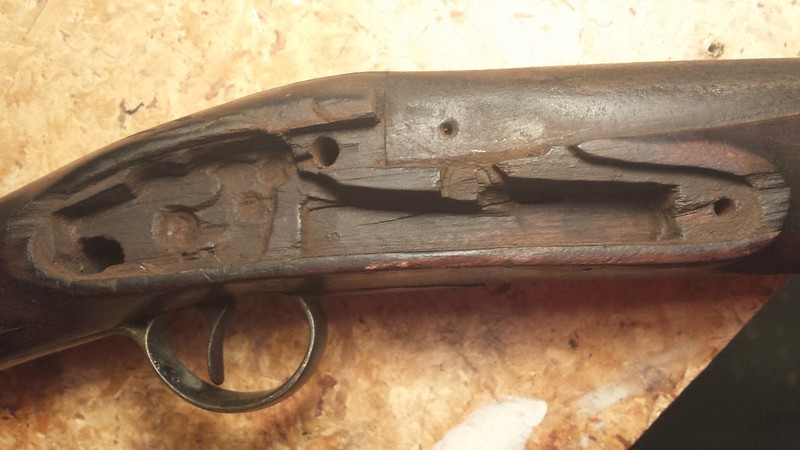

The tang screw/bolt won't come out, so I can't get the barrel off.
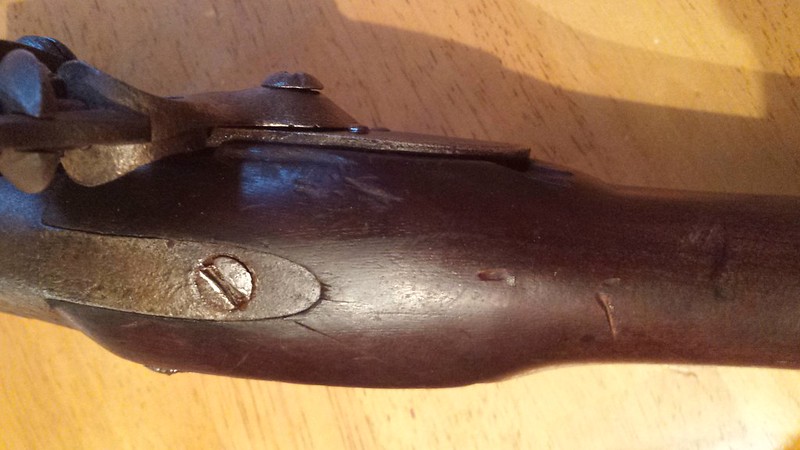 [/url]
[/url]
There appears two sideways O's on the barrel.
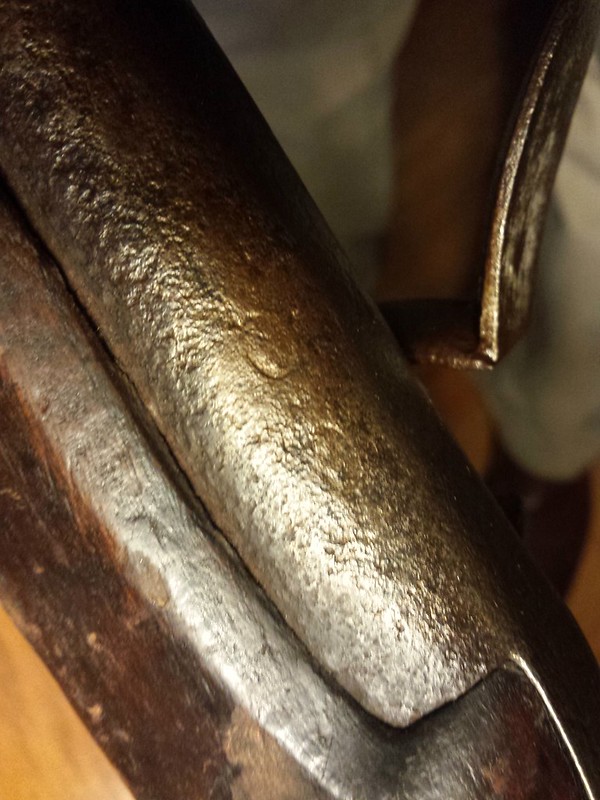
I made a ramrod for it.
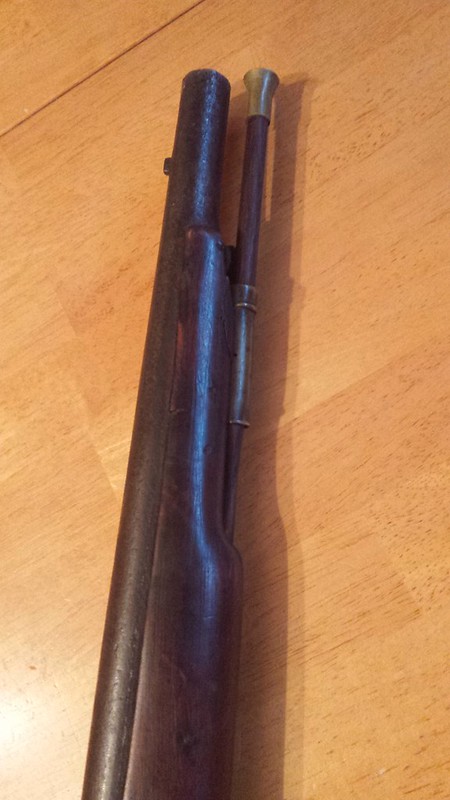
And got a new flint for it.
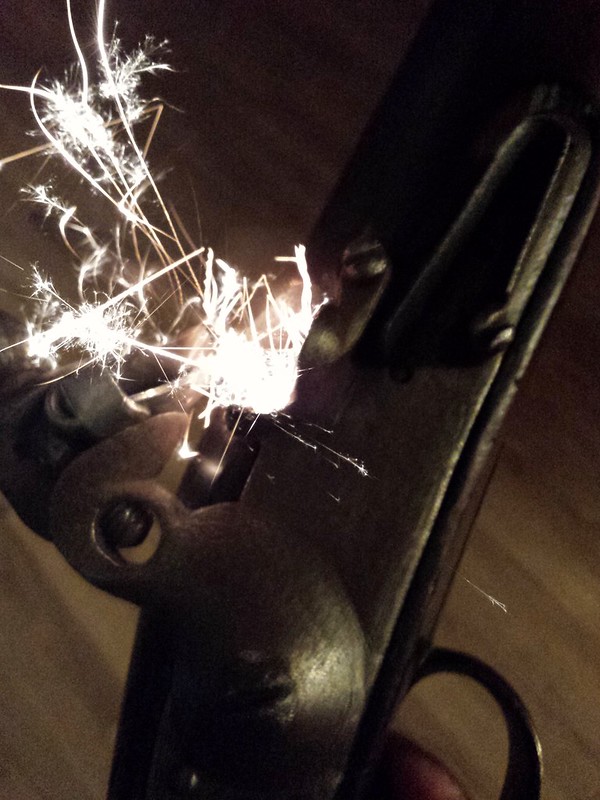
And then I fired it using 70 gr. of 3F that I got from a neighbor. It takes about 50 gr. just to cover the touch hole.
I picked up some .375 round ball for cheap to use as shot, again with 70 gr. of 3F. I used up to 8 balls, which created very little pressure. The ball only put a dent in a plank of wood.
It creates quite a fireball!
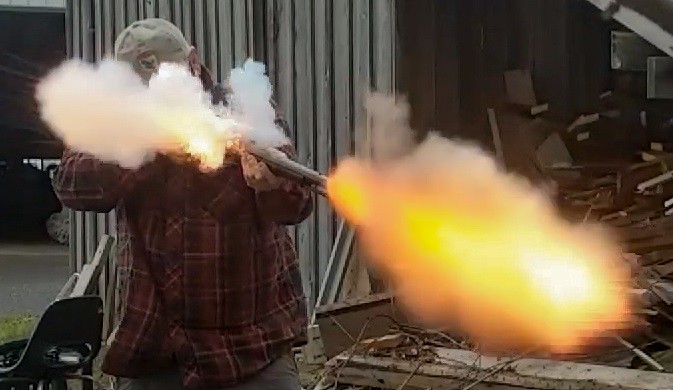
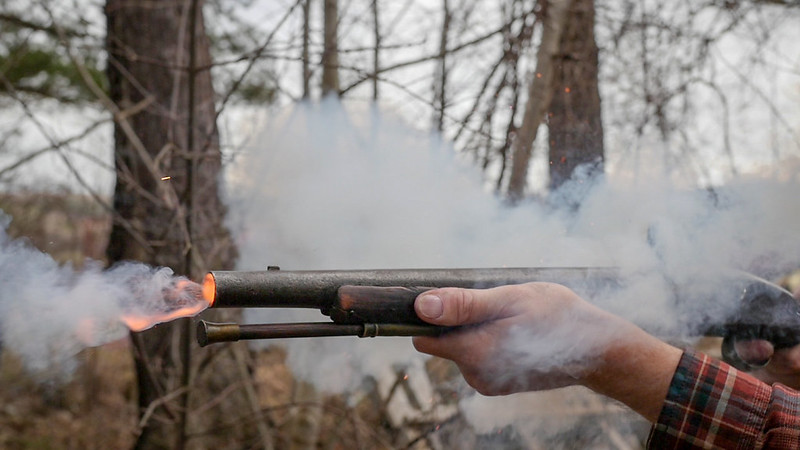
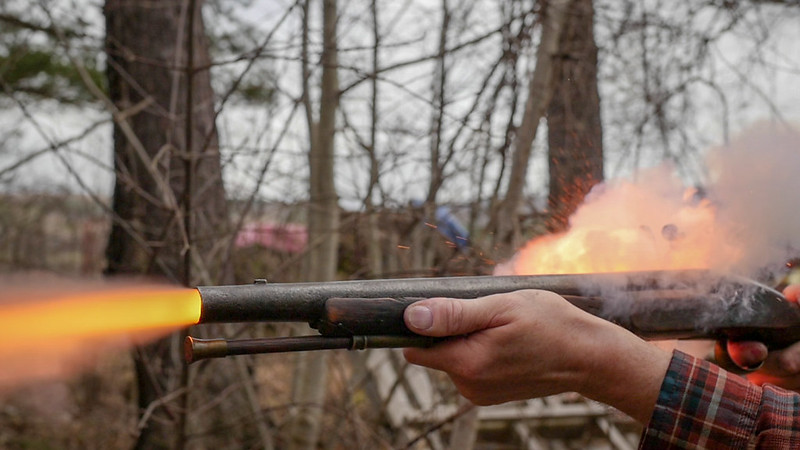
I have just picked up some 2F and .69 caliber round ball, so that will be my next test. Yes, I will use a string remotely to test it. I still don't fully trust the barrel, and really think a light load is best, regardless.
Finally, I will hang it up on the wall, and get something a little newer so I can continue to satisfy my newfound black powder interest. The "Canoe gun" thread I read here was interesting.
Anyone have any ideas on what this old flamethrower used to be?
I picked it up about a year and a half ago, and finally decided to shoot it, after looking it over.
It has led a rough life. I've been trying to figure out exactly what it started out as, which is very difficult because it has practically no markings on it. At this point, it appears to be a parts gun.
The lock reminds me of 3rd pattern Brown Bess, but with barely any markings, the best guess is that it is an American copy. The barrel is .75 caliber, and was cut down to only 15 3/8 inches a very long time ago. I have no idea what the buttplate, or trigger and guard came from.






The end of the barrel looks like it was used for a battering ram.

A closer look at the brass.


This pointy end of the lock was ground off to fit in the current stock. There isn't much detail to the lock.


I did manage to get the lock out of the stock.


The tang screw/bolt won't come out, so I can't get the barrel off.

There appears two sideways O's on the barrel.

I made a ramrod for it.

And got a new flint for it.

And then I fired it using 70 gr. of 3F that I got from a neighbor. It takes about 50 gr. just to cover the touch hole.
I picked up some .375 round ball for cheap to use as shot, again with 70 gr. of 3F. I used up to 8 balls, which created very little pressure. The ball only put a dent in a plank of wood.
It creates quite a fireball!



I have just picked up some 2F and .69 caliber round ball, so that will be my next test. Yes, I will use a string remotely to test it. I still don't fully trust the barrel, and really think a light load is best, regardless.
Finally, I will hang it up on the wall, and get something a little newer so I can continue to satisfy my newfound black powder interest. The "Canoe gun" thread I read here was interesting.
Anyone have any ideas on what this old flamethrower used to be?




